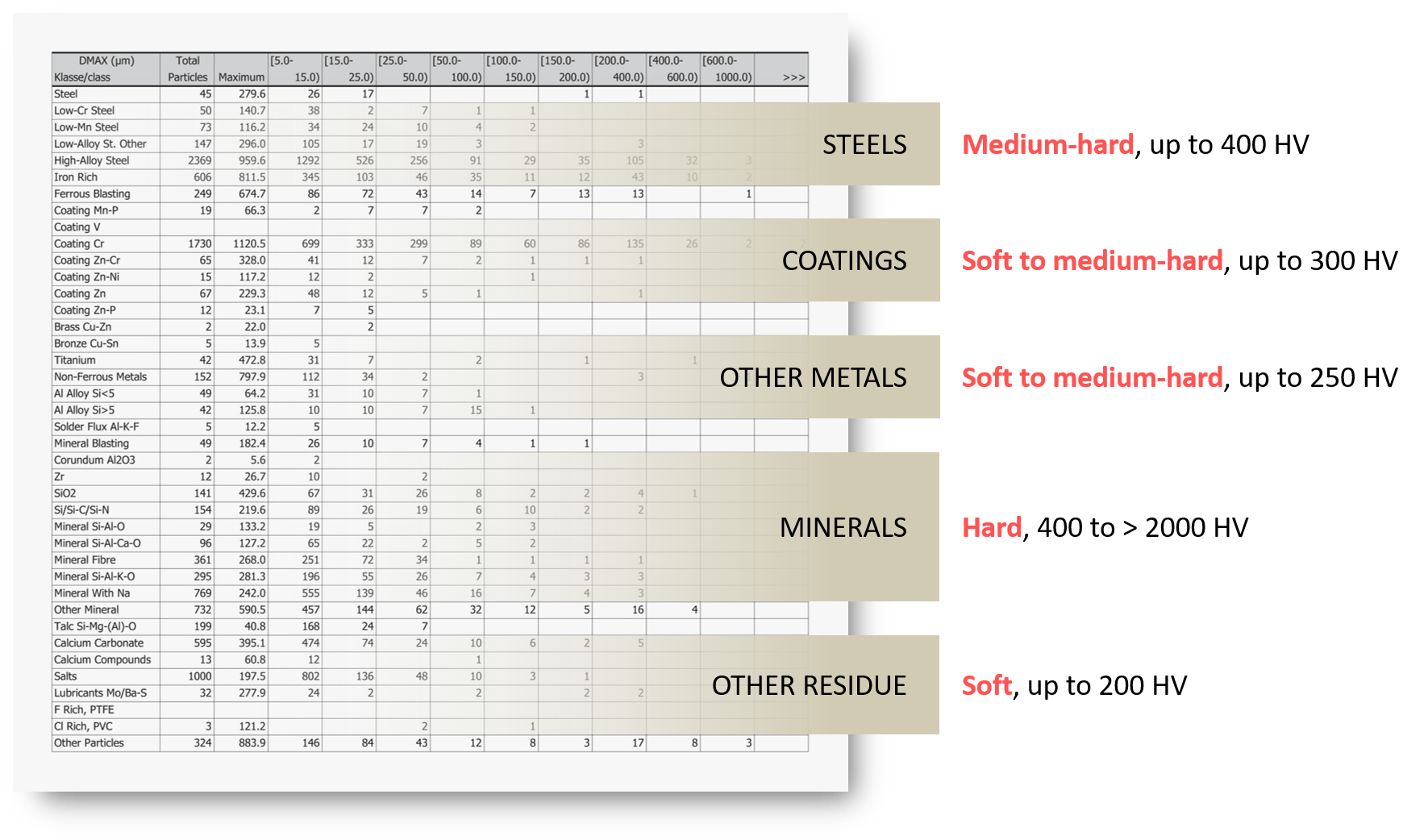SEM-EDX CLEANLINESS ANALYSIS
Reliably detect residual dirt particles - identify risk and origin
Technical Cleanliness
Why use SEM-EDX?

In addition to measuring the number and size, more and more cleanliness specifications also require a precise determination of the material of the residual dirt particles.
The aim is to reduce the risk of failure: mineral particles are often abrasive and lead to the failure of gears, valves and bearings in mechanical systems. Metallic particles are conductive and increase the risk of failure of electrical components, e.g. due to leakage currents or short circuits.
The question of the origin of the contamination is also important for the cleanliness laboratory. Without precise knowledge of the materials, this question cannot be answered.
Phenom ParticleX
Insert four filters - press start
An ideal system for SEM-EDX particle analysis in technical cleanliness is the Phenom ParticleX tabletop device. The system is equipped with the well-known Perception software and offers the highest possible level of automation.
The instrument is designed for maximum throughput: the user can insert up to four 47 mm filters at the same time. It only takes three minutes from inserting the samples to starting the analysis.

Follow-up and revision
When analyzing component cleanliness according to VDA-19.1 and ISO-16232, a follow-up check of the results for the standard-relevant particles is required. With the Particle Browser, we provide a tool for simple and quick follow-up checks of SEM-EDX particle data.
Meaningful reports
The user can configure the report template according to his wishes and thus optimally present the results. The reporter software automatically creates histograms, particle galleries and chemical tables.
Light microscopy versus SEM-EDX
Metallic and mineral particles
Optical systems are widely used in testing technical cleanliness. The devices are relatively inexpensive and provide quick insights. However, when detecting metallic and mineral particles, the results of light microscopy often prove to be inaccurate. The use of SEM-EDX particle analyzers provides a remedy.
Since residual dirt particles are exposed to liquids, temperatures and friction during component production, their surface is often not shiny, but matt or corroded. Such metal particles are incorrectly classified as non-metallic in light microscopy.
The following example shows three particles of zinc, steel and aluminum that were identified as non-metallic under light microscopy. SEM-EDX analysis shows the metallic nature of the particles.

The differences are clearly visible in the quantitative analysis. The figure compares the results of light microscopy and SEM-EDX for the same membrane. In the optical analysis, the metals are detected via the shine. In SEM-EDX, the metal particles are determined spectroscopically via the elements.
SEM-EDX detects significantly more metal particles in all size classes. For small particles, the detection rate differs by a factor of 100.

The images show particles made of aluminum, corundum, glass blasting material and steel. In the SEM image, all four material classes are shown with good contrast.
In light microscopy, only the metallic particles are shown with high contrast. Hard mineral particles show almost no contrast and remain invisible in optical analysis. Due to systematic under-detection, we recommend our customers to use the SEM-EDX method exclusively for the reliable detection of abrasives.

Highlight applications


